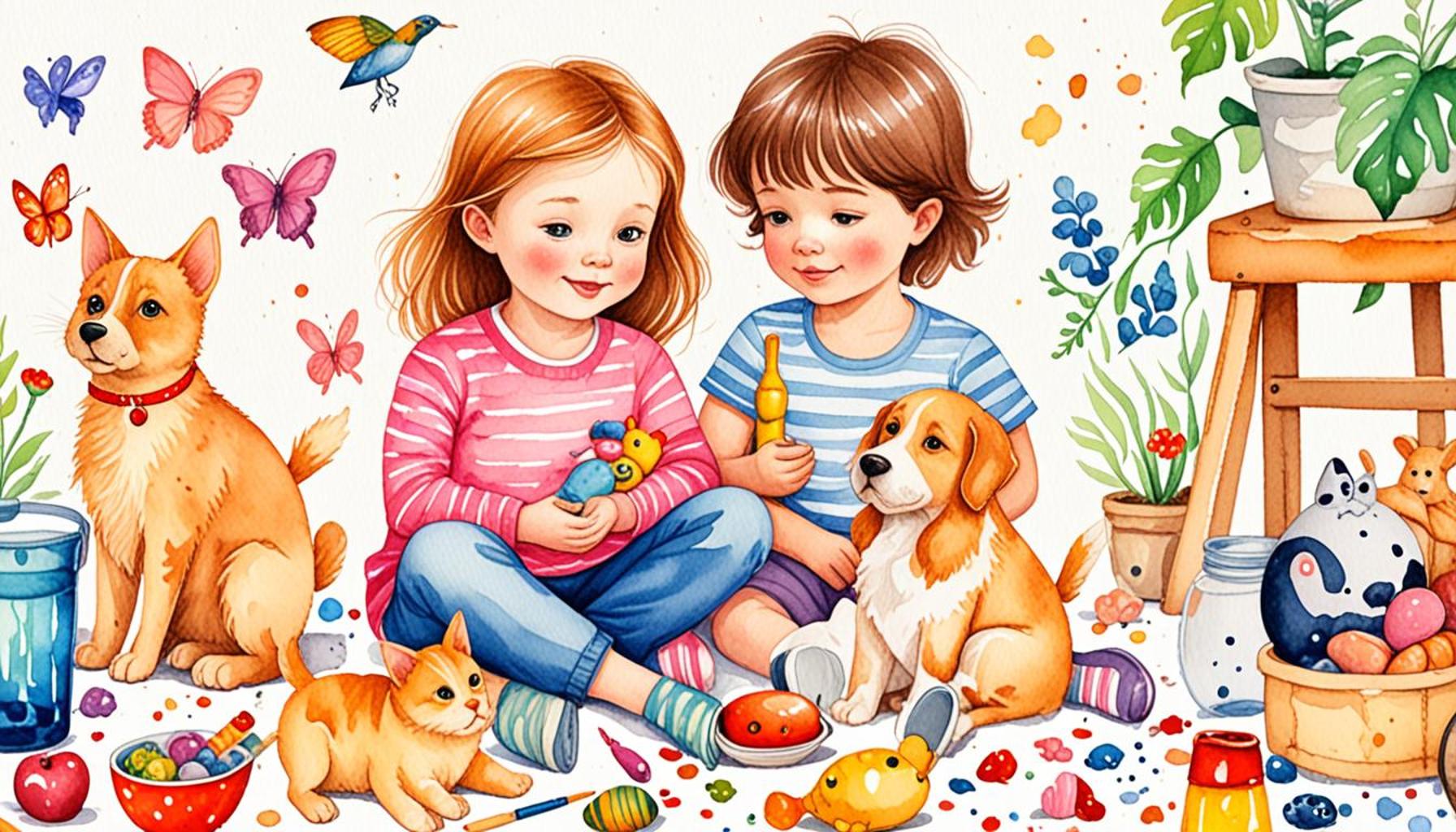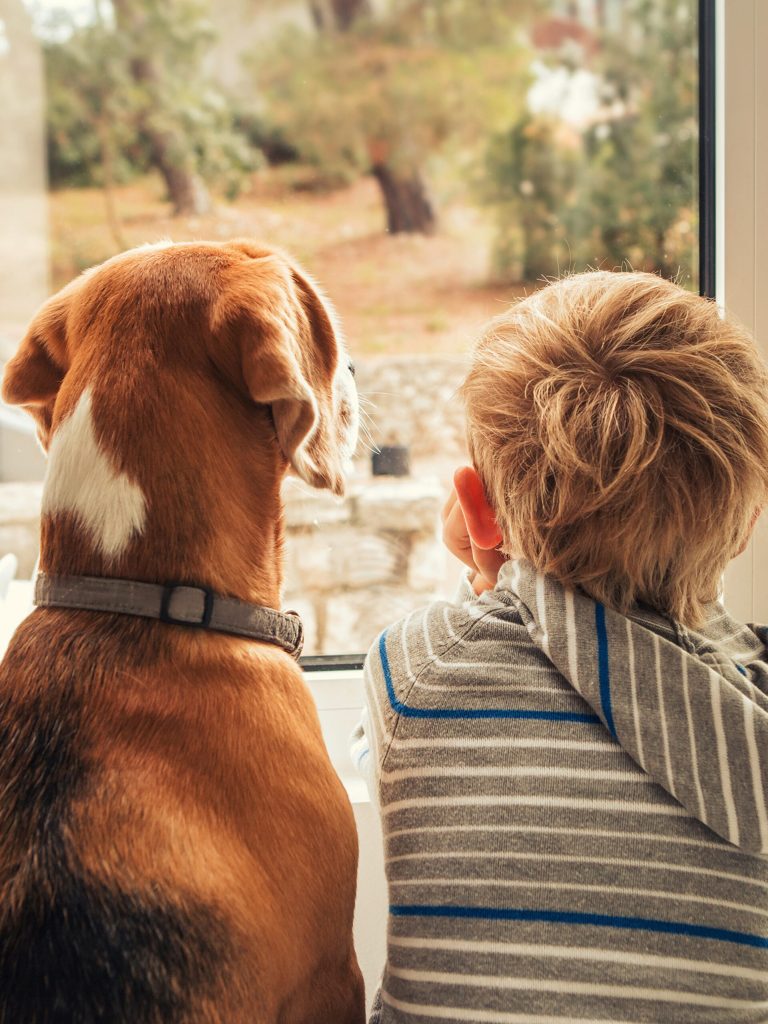Pets and Children: How the Presence of Pets Can Help in Child Development

Understanding the Multifaceted Benefits of Pets in Child Development
In the United States, the integration of pets into family life is becoming increasingly common, with around 67% of households owning a pet, according to the American Pet Products Association. However, pets are not merely sources of joy; they play a pivotal role in the holistic development of children. Research indicates that kids who grow up alongside their furry companions often showcase enhanced emotional and social abilities, illustrating that the presence of pets can significantly enrich a child’s development.
- Improved Emotional Skills: Studies show that children who interact with pets tend to display higher levels of empathy and compassion. For instance, the process of caring for a pet teaches kids to understand and respond to emotions—both their own and those of the animals. A child learning to recognize when a dog is anxious or excited not only fosters an understanding of animal behavior but also enhances their own emotional literacy.
- Enhanced Social Interaction: Pets often serve as excellent conversational starters. Children with pets can share stories about their animals, providing an easy topic for discussion among peers. This can be especially beneficial for shyer children, as the presence of a pet can ease social anxiety and help facilitate social interactions. For example, a child walking their dog in the neighborhood might attract the attention of other children, encouraging spontaneous social bonding.
- Physical Activity: The responsibility of walking a dog or playing fetch actively engages children in physical activities. Regular playtime with pets can combat sedentary lifestyles that are prevalent in many U.S. households, promoting outdoor play and a more active lifestyle from an early age. This active engagement is crucial in combating rising obesity rates among children.
- Responsibility and Routine: Caring for a pet imparts valuable lessons about responsibility and routine. Tasks such as feeding, grooming, and walking a pet require consistent engagement, teaching children essential life skills like time management and dedication. For instance, children can learn to set reminders or adhere to schedules, which are important skills they will carry into adulthood.
A pet can be a child’s first friend, helping them navigate interpersonal relationships while offering a comforting presence. The bond formed between children and their pets is unique; it provides emotional support during challenging times, promoting resilience as they learn to cope with difficulties. Children often view pets as confidants, sharing their thoughts and feelings without fear of judgment.
Delving deeper into the connection between pets and child development reveals a rich landscape of benefits and learning experiences. However, it is crucial to acknowledge that responsible pet ownership comes with its own set of obligations. Ensuring that a pet is well cared for is fundamental to allowing children to reap the benefits discussed. When considering a pet, families must weigh both the emotional rewards and the responsibilities involved, embarking on a journey of growth and understanding that shapes the trajectory of their children’s lives.
DISCOVER MORE: Click here to learn about balanced pet nutrition
Emotional Growth Through Companionship
The relationship between children and their pets can be transformative, particularly concerning emotional growth. Children who engage deeply with their pets often experience improvements in emotional intelligence, leading to enhanced understanding and management of their own feelings. Research shows that children in pet-owning households display more empathy and are better at recognizing emotional cues, both in animals and humans. For example, a child who observes their cat’s behavior during different situations learns to associate specific actions with emotions, sharpening their ability to empathize with friends and family during similar contexts.

Furthermore, this bond allows children to practice important emotional skills in a safe environment. Pets provide unconditional affection, fostering a sense of security. When children share their worries or fears with their pets, they often find solace and a non-judgmental listening ear. This can significantly positively affect kids facing emotional challenges, such as anxiety or bullying. Studies from the University of California suggested that children exposed to pets during formative years exhibit lower levels of stress and anxiety, which can boost their overall resilience in facing life’s challenges.
Social Skills Development
The presence of pets can also enhance a child’s social skills. Pets often become the center of attention in social interactions, effectively breaking the ice between kids. Children with pets frequently engage in conversations about their animals, whether discussing amusing anecdotes or sharing care tips. This shared interest can ease social anxiety and build connections with peers, providing a platform for children to practice communication and develop friendships.
- Interpersonal Relationships: Friends who share a mutual affection for animals often form closer bonds, nurturing teamwork and friendship through joint activities such as pet care or visiting local dog parks.
- Conflict Resolution: Watching pets interact can also provide children with examples of healthy conflict resolution. Observing how animals navigate their feelings can teach kids about diplomacy, sharing, and compromise.
- Boosting Confidence: Taking care of a pet helps children build self-esteem as they take pride in their responsibilities and achievements, from successfully training a new trick to ensuring their pet is healthy and happy.
Understanding how pets assist in social skill development provides parents with new strategies to support their children’s growth. By encouraging interactions with pets—whether through play, training, or care—families can cultivate stronger interpersonal relationships essential for their children’s social success.
Ultimately, the interplay between emotional skills and social interactions forms a vital part of child development. Parents observing these benefits can motivate them to consider adopting a pet, transforming homes into nurturing environments where emotional learning and social bonding thrive. However, a knowledgeable and active approach to pet ownership is essential to ensure that both children and their furry friends reap the rewards of this enriching relationship.
| Advantage | Description |
|---|---|
| Emotional Development | Interacting with pets enhances empathy and emotional understanding in children, allowing them to recognize feelings in themselves and others. |
| Social Skills | Having a pet encourages children to engage in social interactions, fostering communication skills and teamwork as they care for their animals together. |
The presence of pets can profoundly influence children’s development, providing various emotional and social benefits. When children build connections with their furry companions, they not only learn to express their feelings but also nurture a sense of responsibility. This caring behavior cultivates patience and improves the capacity for cooperation, important traits in their social interactions. Studies indicate that children who grow up with pets often exhibit higher self-esteem and a greater sense of security. The companionship of a pet can mitigate feelings of loneliness and anxiety and can serve as a non-judgmental outlet for children to express their worries.Additionally, pets can provide a steady source of unconditional love, helping children navigate through challenging emotional landscapes. By sharing their experiences with friends, children develop crucial social skills. These early interactions with pets can set a foundation for healthier relationships in later stages of life, proving that the bond between pets and children is not just a source of joy but also a crucial element in holistic child growth.
EXPLORE MORE: Click here to unlock essential health benefits for your pets
Physical Activity and Responsibility
Another compelling aspect of pet ownership that significantly contributes to child development is the promotion of physical activity. Engaging with pets, particularly dogs, often requires children to be active participants in their care. Regular activities like walking the dog, playing fetch, or even grooming pets help children develop motor skills while ensuring they receive adequate exercise. A study published in the journal “Pediatrics” revealed that children who own pets, especially dogs, tend to be more physically active than their non-pet-owning peers. This increased physical activity not only aids in maintaining a healthy weight but also enhances cardiovascular fitness and overall well-being.
Moreover, the responsibility associated with pet ownership fosters a sense of accountability in children. Caring for a pet involves daily routines such as feeding, cleaning, and exercising, which instill a sense of duty. As they learn to take care of another living being, kids cultivate essential life skills that can translate into other areas of their lives. A survey conducted by the American Veterinary Medical Association found that children who assisted in pet care often demonstrated higher levels of responsibility and respect towards both animals and peers.
Fostering Cognitive Skills
Beyond emotional and physical development, pets also play a unique role in enhancing cognitive skills. Interacting with pets can stimulate problem-solving and critical thinking as children find ways to communicate their needs—whether it’s figuring out how to get a stubborn puppy to come indoors or understanding what different animal behaviors signify. These tasks require observation, experimentation, and reasoning, fostering cognitive growth in children.
- Teaching Cause and Effect: Children learn through play and interaction with their pets; for example, they may grasp that pulling a cat’s tail leads to negative reactions. Such lessons emphasize critical thinking about actions and outcomes.
- Encouraging Creativity: Pets can inspire imaginative play, from creating elaborate games to storytelling that involves their pet, which enhances linguistic skills and creative thinking.
- Structured Learning: Incorporating pets into educational activities can enhance learning. For instance, kids reading aloud to their pets can boost literacy since pets provide a comforting presence and eliminate distractions.
A fascinating initiative in several schools across the United States involves therapy animals, highlighting how structured interactions with pets are leveraged for educational and developmental purposes. These programs have shown notable improvements in students’ reading skills and emotional stability, proving that pets can enhance learning in unexpected ways.
In summary, the effects of pet ownership on child development are comprehensive. Along with emotional and social skill enhancement, pets positively influence physical activity, responsibility, and cognitive skills—all vital components of a child’s growth. The diverse range of benefits underscores the importance of deliberate pet ownership, encouraging families to explore how pets can enrich their lives while providing numerous developmental advantages for their children. As research continues to uncover the intricate connections between pets and child development, it becomes increasingly evident that these furry companions hold a special place in nurturing well-rounded individuals.
DISCOVER MORE: Click here for essential pet nutrition insights
Conclusion
In conclusion, the multifaceted impact of pet ownership on child development is both profound and far-reaching. Pets serve as more than mere companions; they are instrumental in nurturing essential life skills and attributes in children. From fostering emotional resilience and enhancing social skills to promoting physical activity and instilling responsibility, the presence of pets can significantly enrich a child’s formative years.
Moreover, the cognitive benefits derived from interacting with pets cannot be overlooked. Engaging in problem-solving, nurturing creativity, and participating in constructive learning experiences all contribute to a child’s mental growth. Such interactions not only create lasting memories but also provide a safe space for children to explore and learn about the world around them. Research substantiates these advantages, revealing that children with pets show marked improvements in emotional well-being and educational outcomes.
As families consider welcoming pets into their homes, it is crucial to approach this decision with intention and understanding of the responsibilities involved. Thoughtful pet ownership can pave the way for rich developmental experiences, ensuring that both children and pets thrive together. With the ongoing exploration of the bonds between pets and children, we are reminded of the invaluable role these furry friends play in shaping healthy, confident, and capable individuals. The journey of nurturing both pets and children is, therefore, a shared adventure that holds the promise of profound mutual growth.


